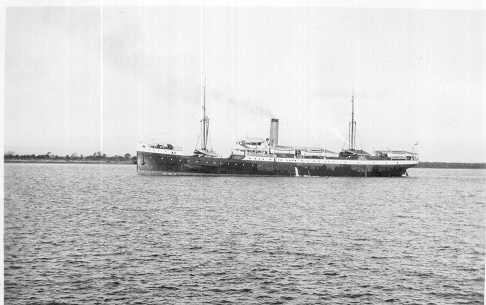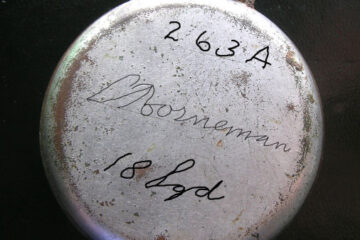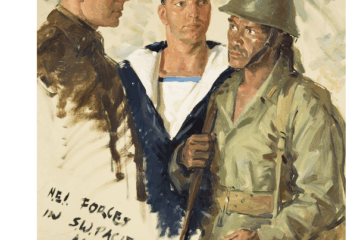Source (Trove): The Week Brisbane 16 October 1908
Java and Australia. Fostering Relations. Netherlands Consul-General.
As stated in our first edition, Mr. W. L. Bosschart, Netherlands Consul-General for Australia and Polynesia, whose legation is situated at Melbourne, is returning from a visit to the Dutch East Indies by the steamer Van Spilbergen which arrived here on Monday. In the course of an interview which the Press representatives had with Mr. Bosschart, he explained that leaving Australia in July Iast, he proceeded to Java by way of West Australia. At Fremantle he formed a branch of the Netherlands Chamber of Commerce, of which he is the Australian president.
At Batavia, Semarang. Surabaya, and Djokjakarta Mr. Bosschart lectured to crowded audiences on the commercial and social conditions of Australia. These lectures were attended by some of the highest personages in the country, and also by many of the leading English residents. The lecturer was able to give his hearers a glowing account of the wonderful potentialities and the marvellous commercial progress of Australia, and also of her sister country. New Zealand. His remarks were listened to with the deepest attention. In some instances, as many as 200 persons were turned away from the building for lack of sitting or even standing room, the corridors even being filled with eager listeners. Quite a large number of people afterwards visited the lecturer at his residence and sought further information concerning the countries whose commercial attractions he had so forcibly dwelt upon.
The statements made by the lecturer about Queensland and the statistics quoted by him from official returns, showing how considerable were the exports of this State compared with her scanty population, created no small amount of wonder and admiration, and the audiences showed their appreciation of the pluck and energy of the producers of this wealth by hearty cheers.
Mr. Bosschart points out that at present considerable time and money also is lost through exports from Java having to filter to Australia through the long and circuitous channels which find their centre in London. This he remarks, is absurd, seeing that Australia and Java are such close neighbours. He therefore suggests that a branch of the Netherlands Chamber of Commerce, such as exists at various Australian ports, including Townsville, should be formed here (ed. Brisbane), with a view to fostering a direct trade between the two countries.
Mr. Bosschart also considers it would be worth some of our leading commercial men’s while to visit Java, in the same manner as a number of the leading businessmen of Java are visiting Queensland in the Van Spilbergen. They would, he declares, find much to interest them in the country, and he is certain also that the visit would prove of pecuniary benefit.
Amongst the Java merchants and manufacturers referred to are Mr. Bosschart, the general manager of the famous Malabar tea estate, which is situated near Bandung, Java, over 3,000 acres of this estate are under tea. the annual output being nearly 3,000,000 lbs. The estate employs about 3,000 hands, and possesses, a most complete plant of electrically driven machinery. Mr. B. Streefland, a leading oil merchant, and Mr. J. Huidekoper manager of the Netherlands-India Lumber Company, also are on board.
At the present time, Mr. Bosschart states, a remount committee from the Netherlands-India Army is in Australia selecting horses suitable for their requirements. These are being obtained in New South Wales, where contracts have been entered into. But there is no reason, Mr. Bosschart observes, why a great horse-producing State like Queensland should not participate in this trade in the future.
In the meadows of Java also, the consul-general saw West Australian cattle grazing. A considerable trade between the Western State, and the Netherlands-Indies has sprung up of recent years, but there is no reason why one particular State should have a monopoly of it. It is to Queensland’s own interests, Mr. Bosschart remarks, to cultivate trade with Java to the fullest possible extent. Already there is the beginning of a trade, but he thinks Queensland merchants and producers are very foolish if they are contented with that mere beginning. The geographical position of the State and its vast range of products give her immense advantages for carrying on a large export trade with Java.
Already some business is done in the export of meat, but this may be improved, and extended to a very consider able extent. One of the most favourable articles of diet in Java is biscuits, and when it is borne in mind that the population of the country numbers many millions, the potentialities of trade may be imagined. From the southern States already enormous quantities of butter are sent to Java. This also is a branch of trade in which Queensland should be particularly interested. And there are other products or manufactures, foremost amongst which, perhaps, is flour, of which Java in the near future promises to be an extensive importer.
The Van Spilbergen, on her return voyage, Mr. Bosschart explains, will take a gold-mining plant which has been manufactured in one of the southern States. So that, in many ways, Java affords avenues for the Australian exporter. As for the Netherlands-Indies exports these include cocoa beans, coffee, tea, fibres, raw cotton, maize, rice, kapok, straw hats, bamboo goods, oils, including kerosene, timbers, including teak, Borneo timber, etc.
Australia, Mr. Bosschart. points out, has been associated with Dutchmen from the earliest period of her history. In 1605 the Netherlands vessel Duyfken, which was despatched from Bantam, Java visited the northern portion of this coast, cruising in the Gulf of Carpentaria and along the coast from Cape York to Cape Turnagain. The Duyfken Point, higher up on the peninsula, takes its name from the vessel mentioned. The Gulf was named after Peter Carpenter, one of the Dutch East Indies Company’s governors, in 1623, when the coast was visited by another Dutch navigator, who had charge of an expedition consisting of two ships, the Arnhem and Pera. The latter vessel’s- name is perpetuated in a well-known point on the eastern side of the Gulf, and a portion of the coast was named after the other vessel.
Thirteen years later—namely, in 1636—Gerrit Pool visited Arnhem Land, as it was called, with the ships Amsterdam and Wessel. This intrepid navigator was murdered on the Australian coast. In 1644, the great Tasman came upon these then practically unknown regions and named an indentation of the coast of the gulf, Limmen Bight. When Tasman left Mauritius, then a Dutch possession, two years previously, his principal object was to visit the great southern continent, and also to find out whether or not there was a passage to the south-eastward. In carrying out this project, as is well known, Tasman discovered the Island State which still bears his name. This same navigator discovered New Zealand, which country he also named. From thence he proceeded in a north-westerly direction, until he came upon New Guinea. He afterwards returned to the Dutch colonies. Previous to that time a number of Dutch navigators visited various other parts of the island continent. Amongst these were Dirk Hartogh who arrived on the western coast in 1616, Jacob Edel in 1619, Nuyts in 1627, and many others in the same century. The Leeuwin is named after a Dutch vessel which rounded that well known cape in those same early days, when the great continent which now is being developed so rapidly by Britishers was nothing but a vast terra incognito.
The consul-general will continue his journey southward: by the Van Spilbergen on Tuesday. He, however, hopes to return to Queensland in about six months time, when he will endeavour further to cultivate commercial relations between Java and Australia.
Interestingly Bosschart is als mentioned in letters from Dutch-Australian painter Jan Hendrik Scheltema. Bosschart asked him to assist in a committee to look at importing art from the Netherlands into Australia.
Documents mentioning Mr. W. L. Bosschart
Van Spilbergen

General cargo vessel “Van Spilbergen”, built in 1908 by Maata Fyenoord – Rotterdam. Owned by Koninklijke Pakketvaart Maatschappij. This vessel operated from the Australian Shipping Control Board from May to October 1945. Tonnage: 2863 gross, 1828 net Dimensions: length 325’5″, breadth 44’0″, draught 22’8″ Port Of Registry: Batavia Flag: Dutch


